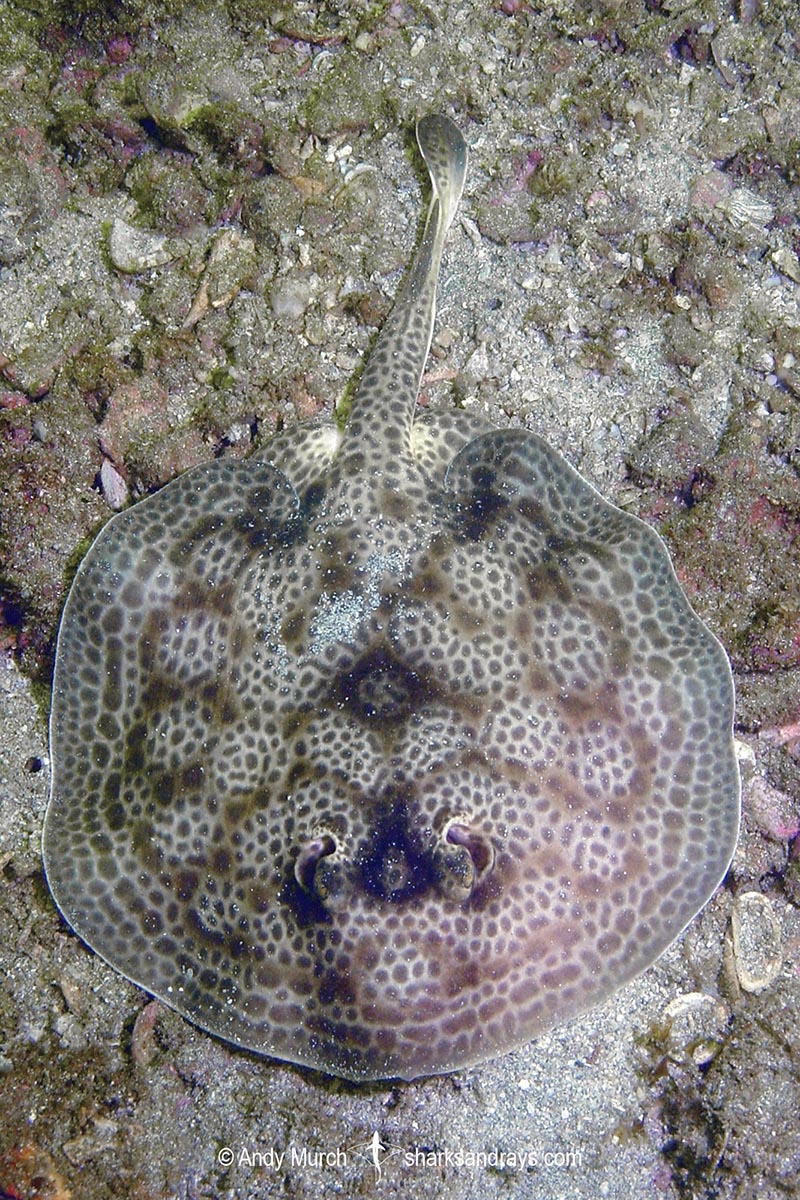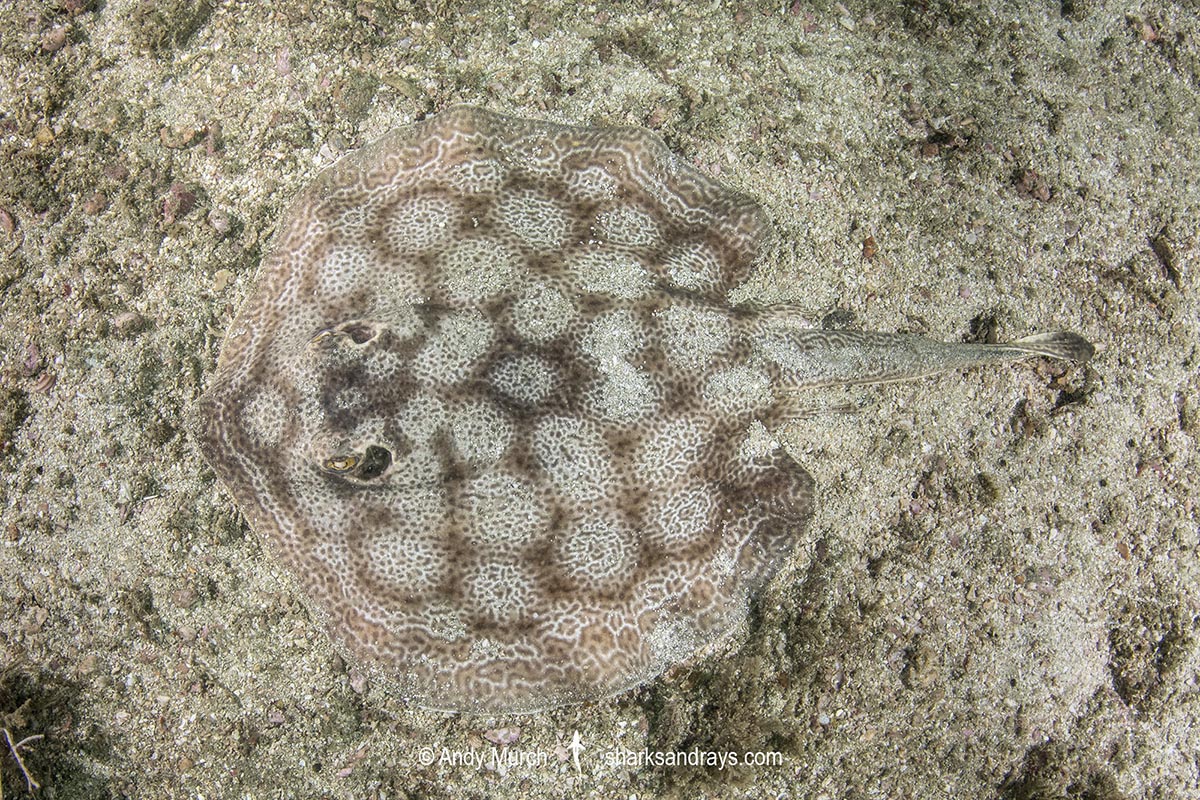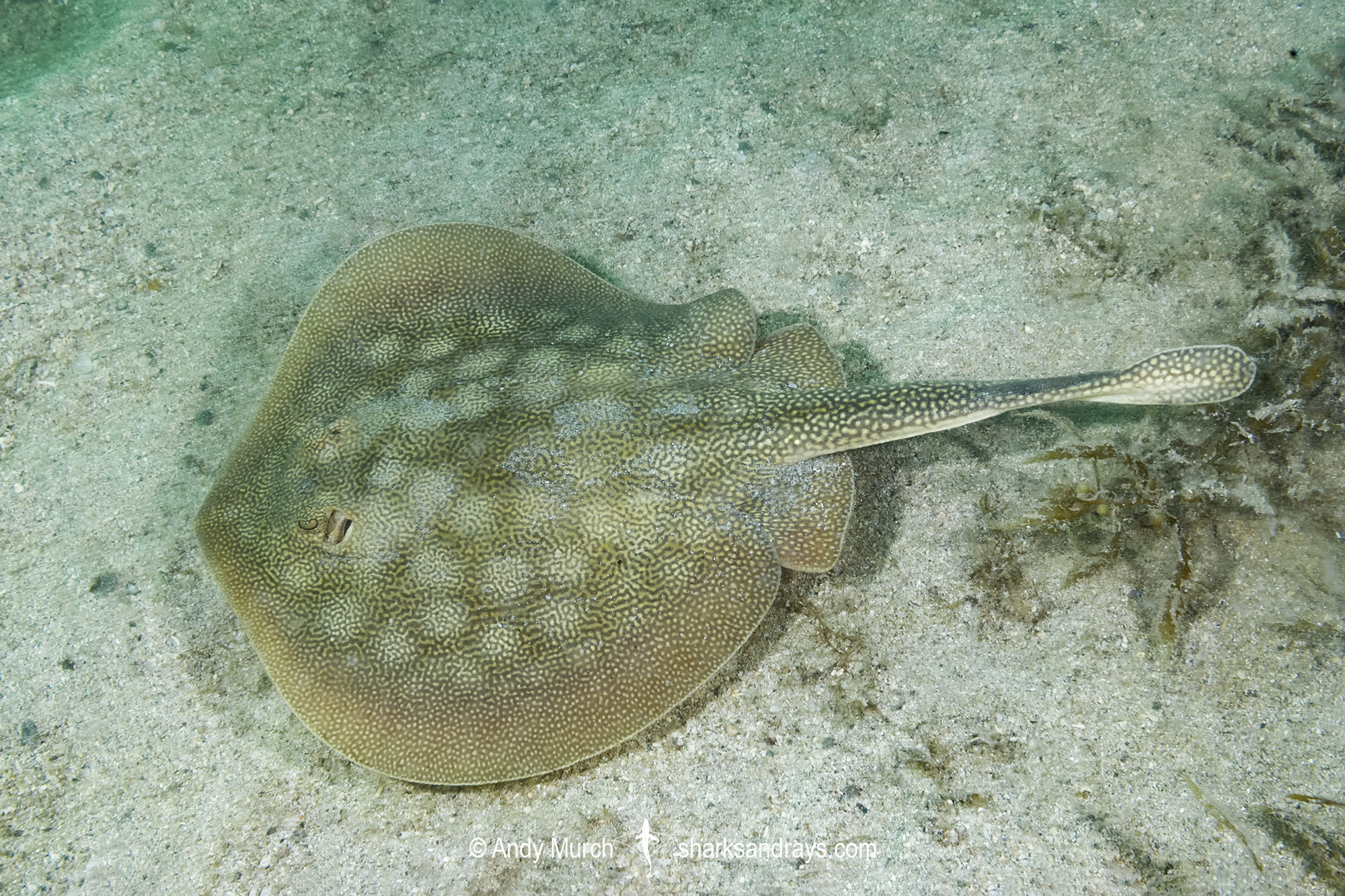Common names
Leopard Round Stingray, Central American Round Stingray, Costa Rican Round Stingray.
Binomial
Urobatis pardalis.
Synonyms
None.
Identification
A small round stingray with a sub-circular disc that is approximately equal in width and length. Snout bluntly angular. Anterior margins of disc almost straight towards snout tip, apices broadly rounded. Disc completely smooth. Pelvic fins broadly triangular with rounded posterior margins, lengths slightly shorter than width.
Eyes medium-sized; orbit length 0.37 x snout length. Mouth weakly arched. Nasal curtain skirt-shaped. Nostrils slit-like.
Tail short and broad based, with lateral skin folds that are most prominent anterior to caudal sting. Tail length 46-48% of total length. Caudal sting short. Caudal fin short and high, with a high upper lobe and broadly rounded posterior margin.
Colour
Dorsal coloration creamy or light brown with a dense covering of small dark brown spots and reticulations, overlying a diffuse, brown honeycomb pattern. Spot size very small in adults, roughly half of eye size in juveniles. Large juvenile spots break up into irregular spots and reticulations as size increases. Ventrum pale and unmarked, sometimes pinkish.
Size
Total length at least 38cm. Length at birth 14cm.
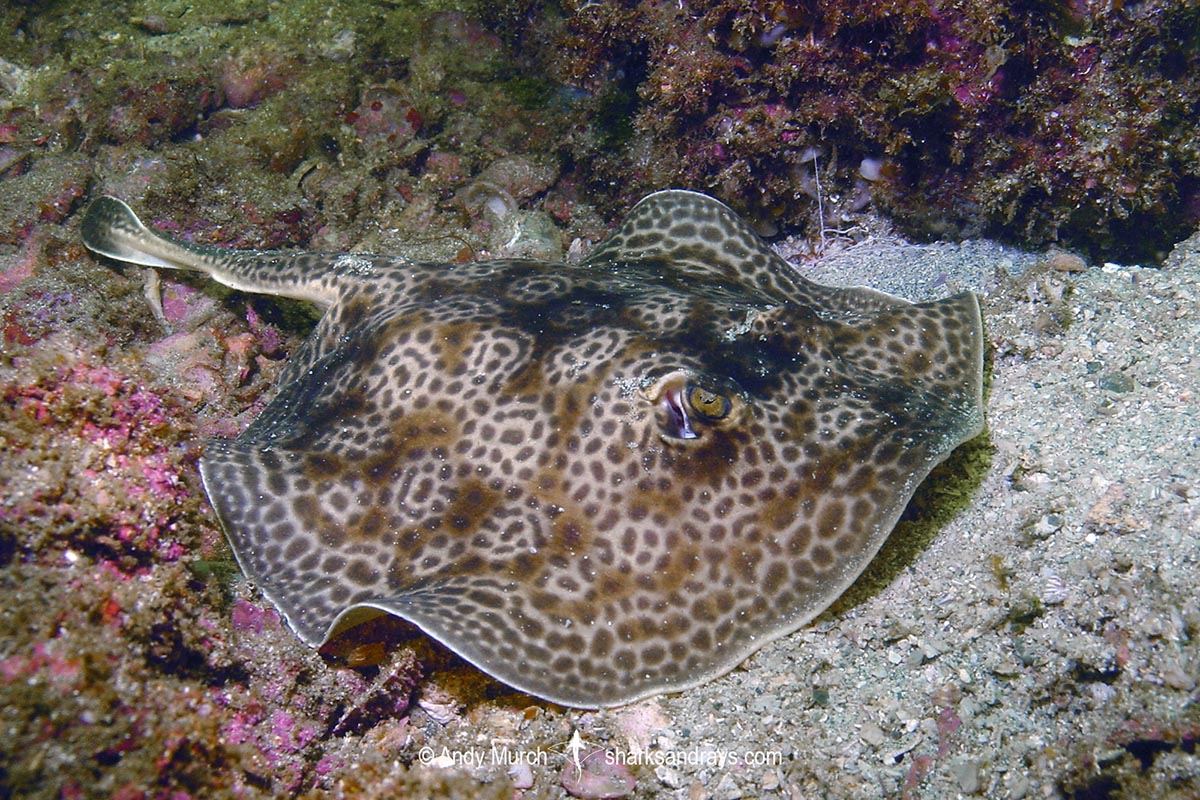
Conservation Status
LEAST CONCERN
The leopard round ray is a bycatch component of trawl fisheries and other ground fisheries. It has a restricted geographic and depth range but inhabits rocky ground (where trawling is not possible) as well as sandy habitats. Although bycatch mortality is probably high, the endemic population of Urobatis pardalis in Costa Rica appears to be fairly abundant and stable.
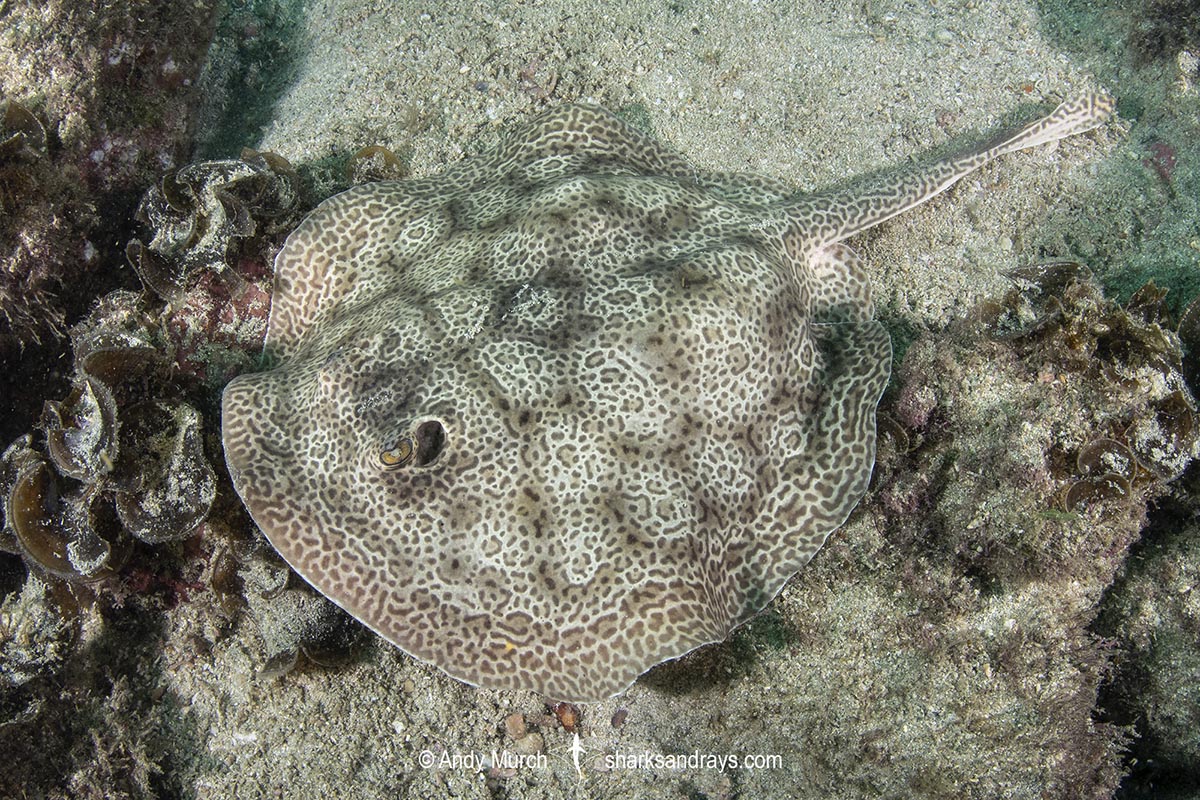
Habitat
Tropical seas. Found in shallow sandy bays and on reef rubble, often near rocky reefs. Usually shallower than 15m but recorded down to 53m.
Distribution
Eastern Pacific. The leopard round stingray has only been recorded from Costa Rica but it is a newly described species so future range extensions are likely. It’s great similarity to Haller’s round stingray make range assessment problematic.
Reproduction
Aplacental viviparous. Litter size unknown.
Diet
Probably small fishes and benthic invertebrates.
Behavior
Poorly known.
Reaction to divers
Initially tolerant if approached carefully.
Diving logistics
Although the leopard round stingray has a limited range, it is abundant where it occurs. Divers are likely to see numerous animals on virtually every dive in Costa Rica.
I found them to be abundant around reefs off Playa del Coco, Islas Catalinas, and Montezuma. Leopard round stingrays do not appear to be seasonal but diving conditions/visibility are generally better in thee summer.
What’s new
View our full list of updates
Similar species
Haller’s Round Stingray Extremely similar. Possibly distinguishable by smaller spots in younger specimens.

